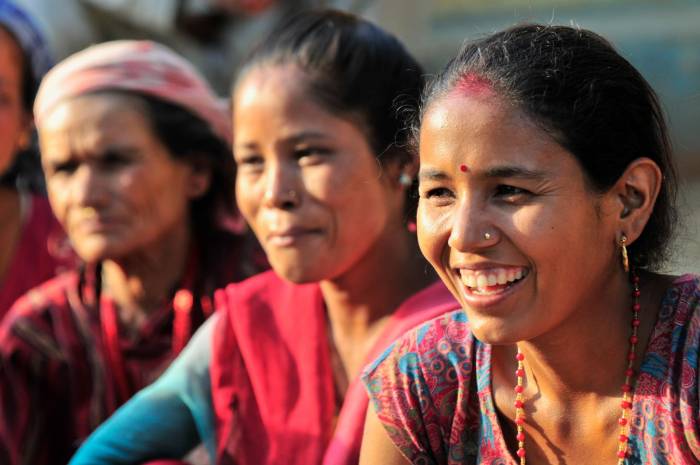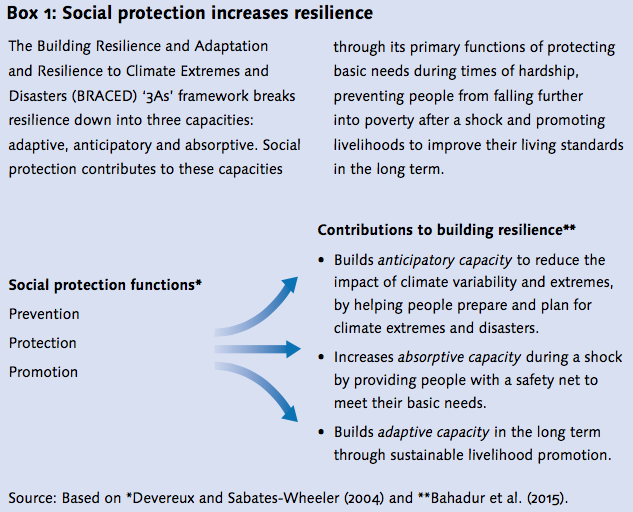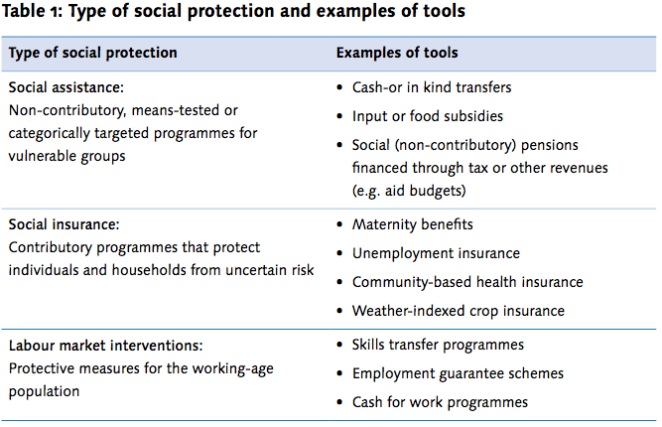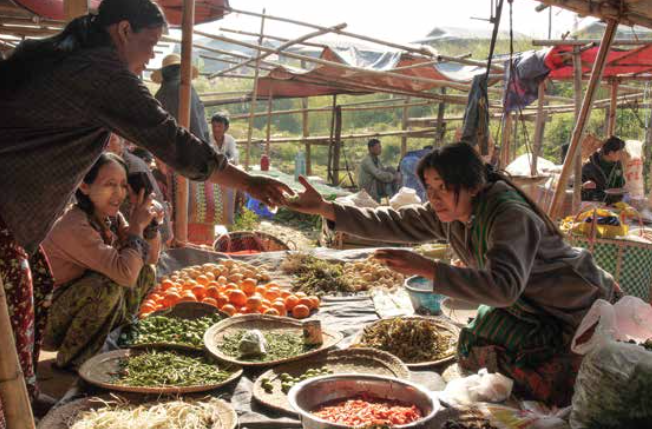Increasing people’s resilience through social protection

Introduction
Climate-related shocks and stresses are posing significant obstacles to poverty reduction. Climate change could result in an additional 100 million people living in extreme poverty by 2030, unless climate-informed development interventions prevent some of its disastrous consequences. In many cases, climate-related events happen on top of economic or political crises within a short timeframe and strain people’s capacity to cope. For example, in Ghana and Mali local floods and droughts accompanied the 2007/08 food and fuel price crisis.
Policy responses that aim to address the underlying causes of poverty and vulnerability and are able to reduce the increasing risk of climate shocks and the impoverishing effects of disasters are gaining more traction. Social protection is one policy tool that has proven to effectively protect people’s livelihoods from major shocks, and it has done so predominantly by reducing people’s economic vulnerabilities. These relate to people’s low socioeconomic status or risks that emerge from certain phases in life where additional protection is needed, for example childhood, pregnancy or old age.
Social protection helps ensure people can anticipate and absorb these shocks without taking actions that put their livelihoods at risk and can still meet their basic needs. They help people cope with shocks that affect individuals or households (idiosyncratic), like a car crash or illness, as well as shocks that affect almost everyone in a community (covariate). This is achieved through different types of social protection (see Table 1 of the full text), which can be contributory or non-contributory and subsidised through public funds.
This paper* draws from existing evidence to highlight how social protection programmes and systems can contribute to building the anticipatory, adaptive and absorptive capacity of vulnerable people who are exposed to climate shocks and disasters.
*Download the full text from the right-hand column or via the link provided under further resources. This publication is also available in French (see link under further resources). An overview of adaptive social protection and the key messages from this brief are provided below (references have been removed) – please see the full text for much more detail.

Adaptive Social Protection
As well as reducing social and lifecycle risks, social protection programmes can also be used to buffer the negative impacts of climate extremes and disasters, either by incorporating more ‘adaptive’ and ‘shock-responsive’ characteristics in the programme design or through better coordination with humanitarian responses. The concept of Adaptive Social Protection (ASP), for example, highlights the contributions social protection programmes (such as cash transfers, temporary employment schemes or weather-indexed social insurance) can make to help people adapt to climate change and reduce disaster risk.
The literature on ASP illustrates how conceptual as well as practical linkages between social protection, climate change adaptation (CCA) and disaster risk reduction (DRR) can maximise efforts to reduce people’s vulnerability to short- and long-term shocks in a more integrated way. Social protection instruments can thus be vehicles for protecting those with low adaptive capacity from climate risks, preventing damaging coping strategies and promoting livelihood resilience by increasing people’s ability to withstand shocks. A key element of ASP is that it aims to move away from single-stranded approaches to addressing vulnerability by promoting cross-sector collaboration between social protection, DRR and CCA policies and practices.

Key Messages
-
The increasing prevalence of climate-related extreme events is becoming an additional factor that exacerbates vulnerability and undermines efforts to reduce poverty. Social protection is a key policy tool to help people manage a range of risks to their livelihoods and wellbeing, including climate shocks.
-
Social protection can build anticipatory capacity by linking social safety nets with mechanisms to prepare and plan for climate extremes and disasters. It provides beneficiaries with the capacity to absorb shocks and meet their basic needs in times of hardship. If future risks are accounted for and adequate support is provided, social protection can play a role in building adaptive capacity in the long-term through sustainable livelihood promotion.
-
To ensure programmes can effectively reduce vulnerability to climate risks several factors need to be considers to make it ‘adaptive’ or ‘shock-responsive’. These relate to designing flexible and scalable programmes, ensuring the support provided reduces current as well as future vulnerability, and putting in place targeting, financing and coordination mechanisms that facilitate cross-sector responses to different types of risks.

Suggested Citation
Ulrichs, M. (2016) Increasing people’s resilience through social protection. BRACED Resilience Intel. Building Resilience and Adaptation to Climate Extremes and Disasters (BRACED): London, UK
(0) Comments
There is no content